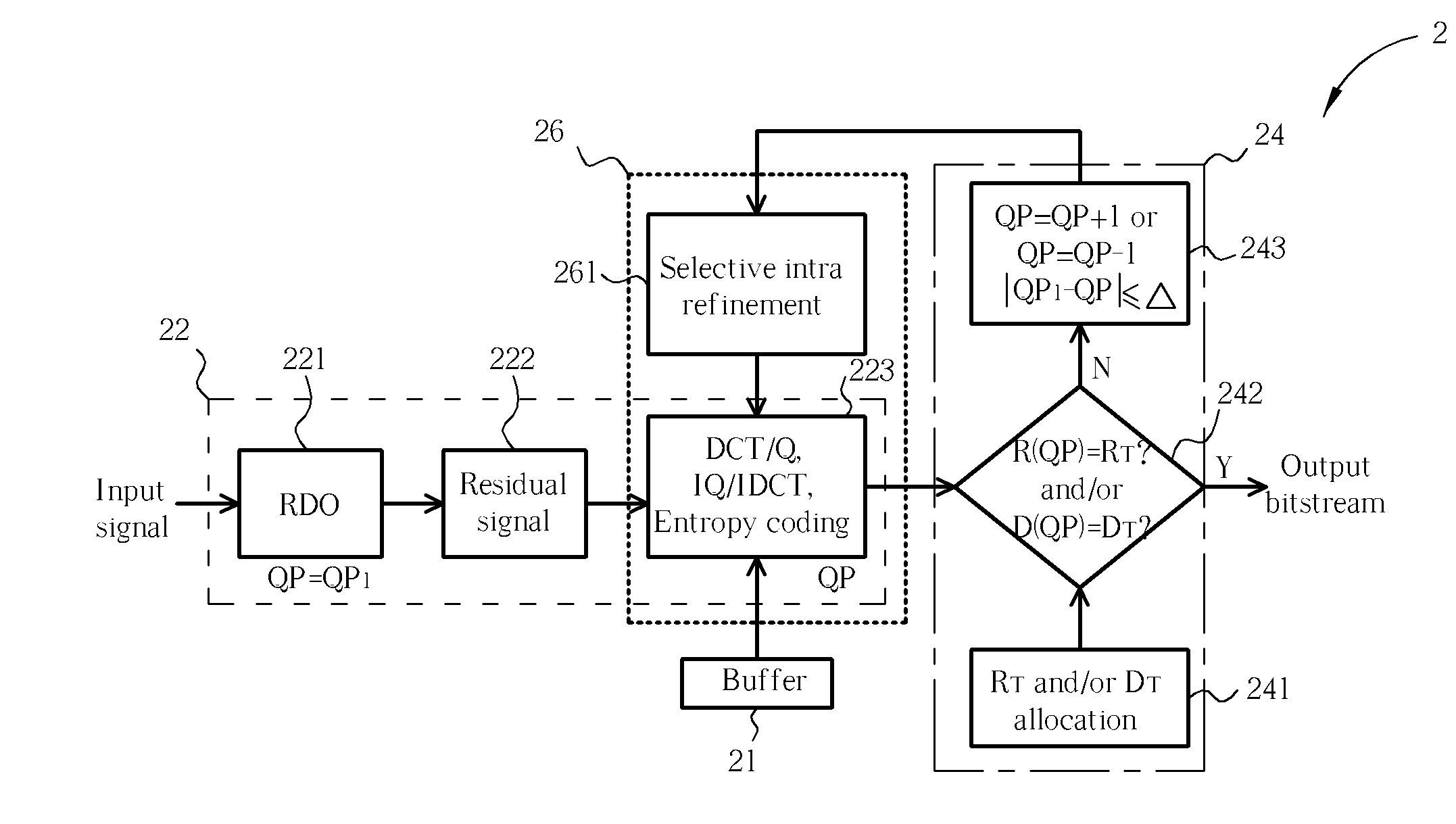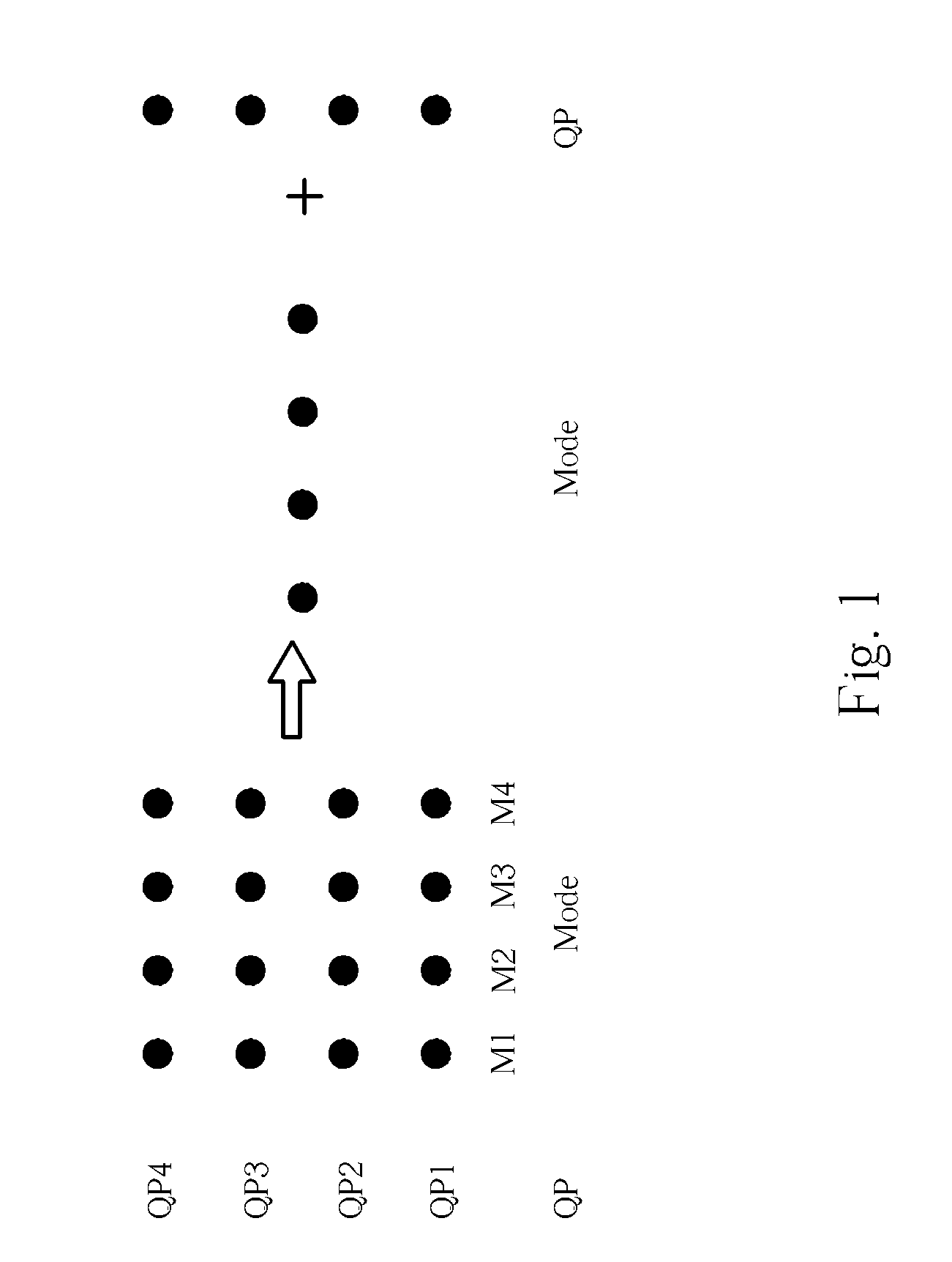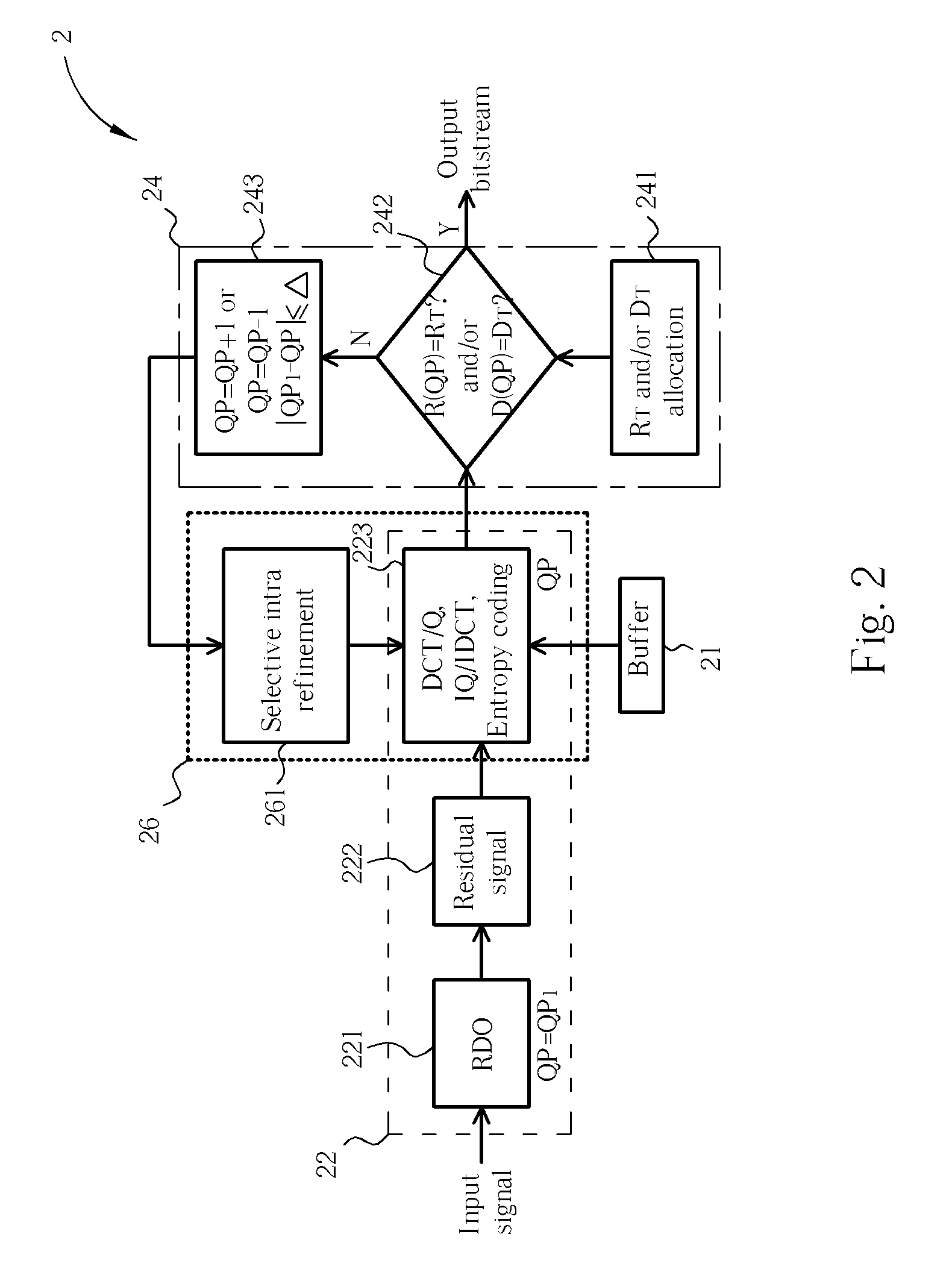Method and apparatus for operational frame-layerrate control in video encoder
a video encoder and frame-layer rate technology, applied in signal generators with optical-mechanical scanning, color televisions with bandwidth reduction, television systems, etc., can solve the problems of rate control performance decline, complex rate control (rc) of h.264, and accuracy cannot be guaranteed
- Summary
- Abstract
- Description
- Claims
- Application Information
AI Technical Summary
Benefits of technology
Problems solved by technology
Method used
Image
Examples
Embodiment Construction
[0026] In H.264 rate control, there are two major problems caused by the inter-dependency between the rate and distortion optimization (RDO) and the rate control (RC) process. Firstly, as addressed in the related art documents and their associated algorithms, the residual signal and its related information such as mean absolute difference (MAD) and variance are not available before the RDO is performed. Secondly, the header information such as macroblock (MB) modes, motion vectors (MVs) and reference frames are also not known before the RDO is performed. As a result, the number of header bits required for encoding the header information cannot be accurately estimated.
[0027] Several rate control methods have been proposed for H.264 with their own solutions to the RDO-RC inter-dependency problem. However, these solutions do not solve all problems caused by the RDO-RC inter-dependency. In U.S. patent application Ser. No. 11 / 047,039, entitled “Video Encoding Methods and Systems With Fr...
PUM
 Login to View More
Login to View More Abstract
Description
Claims
Application Information
 Login to View More
Login to View More - R&D
- Intellectual Property
- Life Sciences
- Materials
- Tech Scout
- Unparalleled Data Quality
- Higher Quality Content
- 60% Fewer Hallucinations
Browse by: Latest US Patents, China's latest patents, Technical Efficacy Thesaurus, Application Domain, Technology Topic, Popular Technical Reports.
© 2025 PatSnap. All rights reserved.Legal|Privacy policy|Modern Slavery Act Transparency Statement|Sitemap|About US| Contact US: help@patsnap.com



